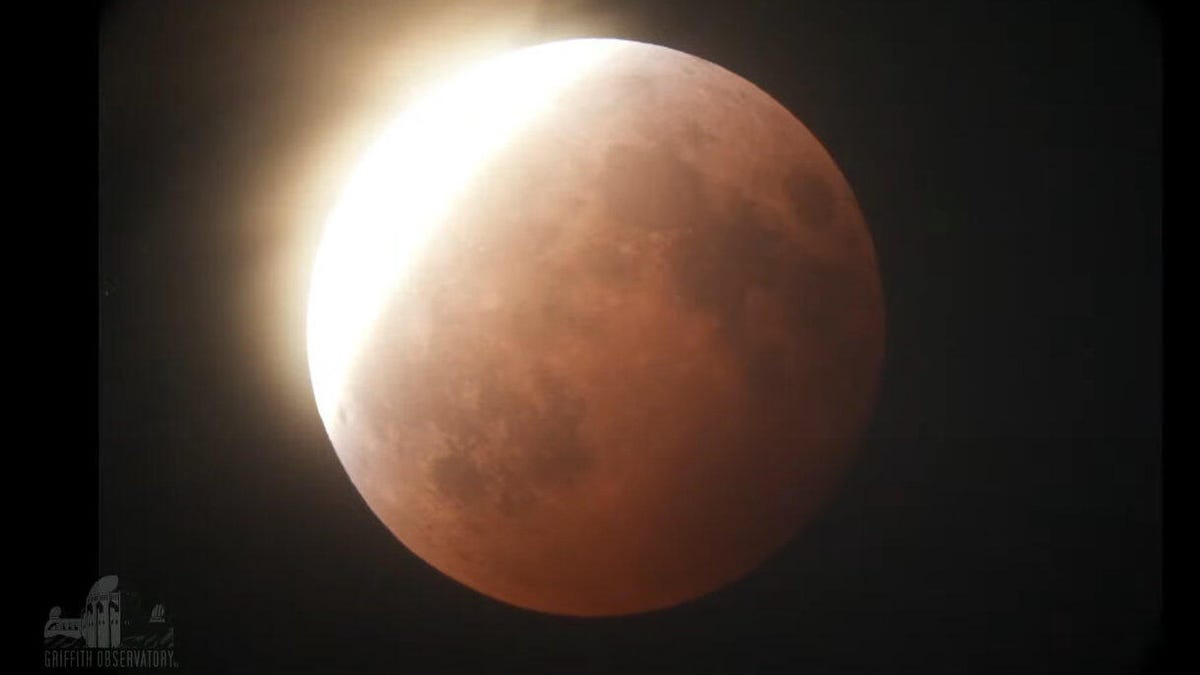Relive the stunning 'super flower blood moon' total lunar eclipse
The Earth's shadow covered the moon on May 26, dressing it in a delightful, dusty red cloak.
A total lunar eclipse turned our celestial neighbor a rusty red on May 26. If you were in Africa or Europe, or simply slept through the show, you can still enjoy the images and livestream reruns of the "super flower blood moon" and its lovely lava-like color.
The astronauts on the International Space Station got a look at the supermoon and the eclipse from their vantage point in orbit around Earth. And photographers down on Earth also snapped some stunners.
Ian Griffin, director of the Otago Museum in New Zealand, tweeted a "picture of the eclipsed moon amidst the star clouds of Scorpius."
What a night! Here’s a picture of the eclipsed moon amidst the star clouds of Scorpius #LunarEclipse2021 #NewZealand pic.twitter.com/3VrjopZNKf
— Ian Griffin (@iangriffin) May 26, 2021
The Pagasa Astronomical Observatory in the Philippines posted views of the eclipse and its progression to Facebook.
It was a successful total lunar eclipse observation, these are some photos that were taken at PAGASA Astronomical...
Posted by Dost_pagasa on Wednesday, May 26, 2021
What is a lunar eclipse?
A lunar eclipse happens when the moon moves into the Earth's shadow, which blocks the sun's light. Unlike with a solar eclipse, you can look directly at the moon with the naked eye.
There are reasons for this total lunar eclipse's exotic-sounding nicknames. Total lunar eclipses tend to give the moon a reddish hue. That's the "blood" part. The Farmers Almanac ascribes various nicknames to full moons for each month. The May moon is typically called the "flower moon." This moon was also close to Earth on its elliptical path, making it appear a little brighter and bigger than usual. That's the "supermoon" bit.
The redness of the moon during a total eclipse can vary. "The more dust or clouds in Earth's atmosphere during the eclipse, the redder the moon will appear," NASA said in a Q&A. The "super blood wolf moon" lunar eclipse of 2019 was a good example of how reddish the moon can get.
The 2021 eclipse was visible across parts of the Americas, Australia, New Zealand and Eastern Asia. Residents of Hawaii and Alaska had a great viewing opportunity, with much of the western US also in position for the show, though it was during the early morning hours.
Revisit the 2021 total lunar eclipse
Livestreams around the world followed along during the eclipse action. Griffith Observatory showed what it looked like from Los Angeles. The video showcases not just the moon, but some dramatic clouds that occasionally got in the way.
You can rewatch the Virtual Telescope Project's eclipse and supermoon live feed.
Timeanddate.com's own global streaming event connected its audience with astronomers in Australia, Hawaii, California and Arizona and featured compelling footage along with expert commentary.
For more on how eclipses work and the best ways to view them, check out our solar and lunar eclipse guide. You will have to wait about a year for the next total lunar eclipse opportunity, coming to parts of the planet in May 2022. The gorgeous views of the super flower blood moon will have to tide you over until then.
Follow CNET's 2021 Space Calendar to stay up to date with all the latest space news this year. You can even add it to your own Google Calendar.


